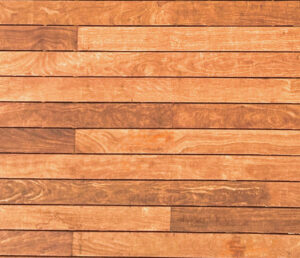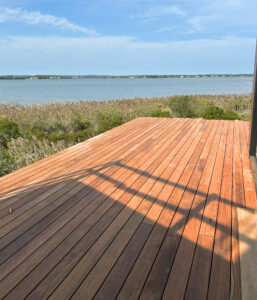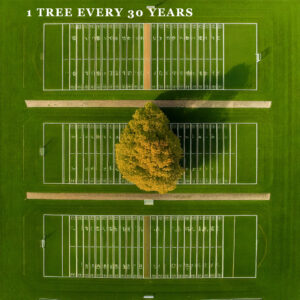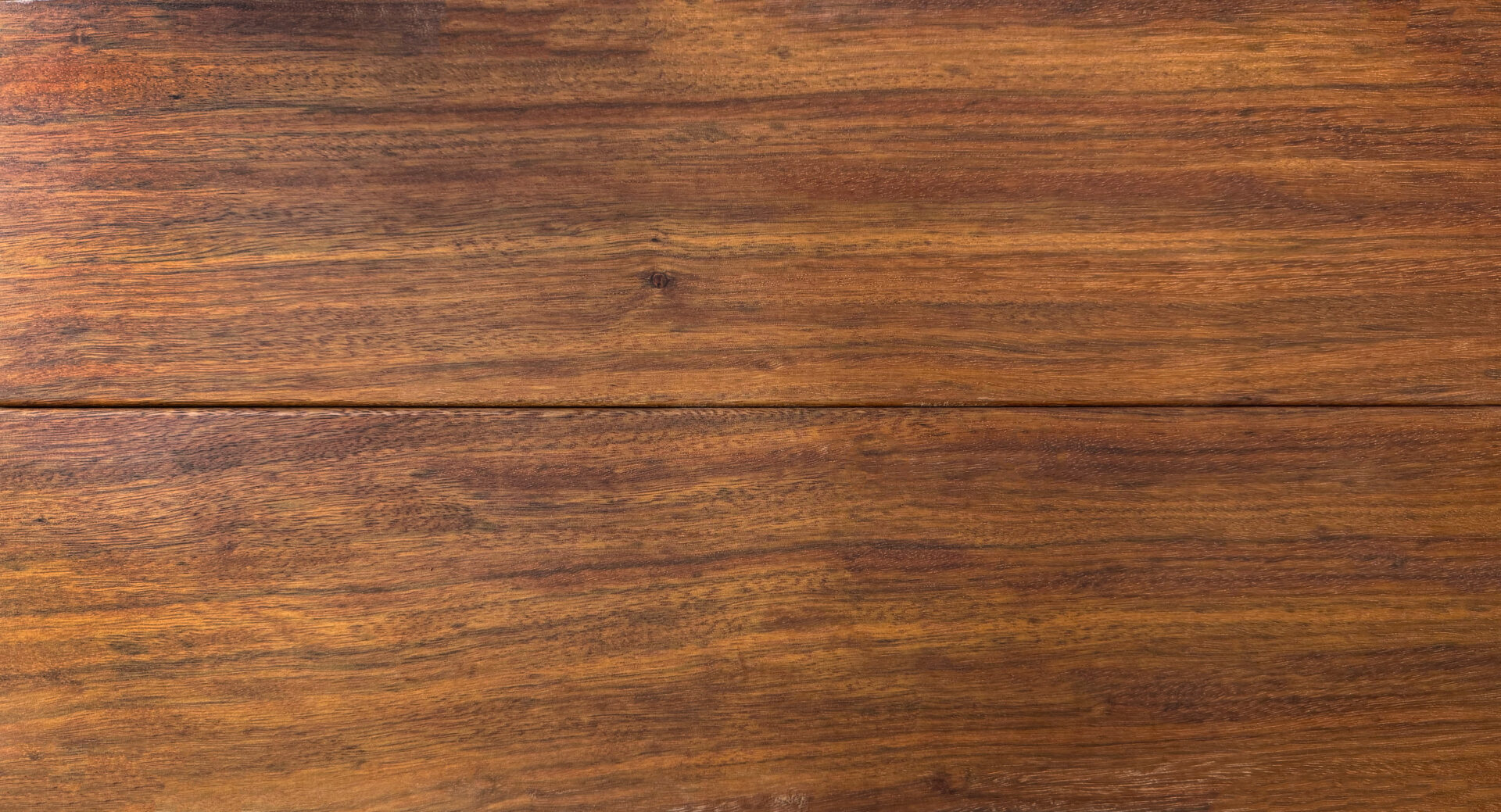Erythrophleum ivorense or suaveolens

If you’re searching for a high-quality decking material to elevate your outdoor space, but want something different than the typical Ipe and Cumaru tropical options, consider Tali wood decking. Tali is an African species that is nearly a dead ringer for Cumaru in appearance, but it comes from FSC forests. This is particularly important with Cumaru’s recent CITES appendix II listing in late 2024. Also known as Missanda or Elone, Tali wood is a durable and attractive hardwood which is perfect for decking applications. It has a similar color to Cumaru but with a finer grain and higher luster which looks beautiful under a finish or even when left unfinished. Personally, I think it feels better under bare feet too!
What is Tali Wood?
Tali wood is a popular decking species sourced from FSC forests in central and west Africa. It serves as a sustainable alternative to other tropical decking species, offering a beautiful and durable option for outdoor projects.
Visually, Tali wood stands out with its rich orange to reddish-brown color and coarser grain pattern. It rivals other popular tropical decking species in terms of performance and aesthetics. But Tali raises the bar by being much more color consistent, a point that Ipe strugles with. Primarily used for decking, Tali wood’s natural resistance to decay and insects, high density, and strength make it ideal for outdoor projects. It also finds use in flooring, furniture, and cabinetry.
Beyond its aesthetic appeal, it offers numerous benefits, including exceptional durability, resistance to rot, decay, and natural protection against termites and insects. Let’s delve into the benefits, origin, comparison to other hardwoods, and key characteristics of Tali wood.
Benefits of Tali Wood Decking

Choosing the best decking material for your outdoor space, Tali wood decking offers several advantages:
Durability & Longevity: Known for its exceptional durability, Tali withstands heavy foot traffic, harsh weather conditions, and the test of time. With proper maintenance, the decking can last for decades.
Natural Resistance to Decay & Insects: Tali wood’s natural resistance to decay and insects negates the need for chemical treatments. It is rated class D “durable” against Termites and boring insects. Tali is also rated as class 1 “very durable” against mold and fungi. No treatments makes it an environmentally friendly choice while ensuring the longevity and structural integrity of your deck.
Stunning Appearance & Grain Patterns: With its rich reddish-brown color, nice luster and distinct grain patterns, Tali wood decking adds elegance and warmth to any outdoor space. It can be a naturally “grainy” wood, so it is recommended to sand it to 80-100 grit to bring up the luster and make it feel nice under foot. It complements various architectural styles, enhancing the overall aesthetic appeal of your outdoor area.
Tali Wood Characteristics
Tali wood is a popular choice for decking due to its unique characteristics and exceptional performance. When compared to the most popular tropical decking woods, Tali decking holds its own and is very similar in durability and performance.
| Character | Tali | Ipe | Cumaru |
| Bending Strength | 22770 | 25963 | 27270 |
| Stiffness MOE | 2567 | 3129 | 27270 |
| Hardness (Janka) | 2920 | 3684 | 3030 |
| Specific Gravity | .78 | 1 | .79 |
| Weight | 61lbs/ft3 | 62 lbs/ft3 | 61 lbs/ft3 |
| Density | 56 lbs/ft3 | 69 lbs/ft3 | 68 lbs/ft3 |
| Radial Shrinkage | 4% | 7 | 5 % |
| Tangential Shrinkage | 7% | 8 | 8 % |
| Volumetric Shrinkage | 12% | 13 | 12 % |
Where is Tali Wood From?

Tali wood is native to the tropical rainforests of West and Central Africa, predominantly found in countries like Ivory Coast, Ghana, Nigeria, Cameroon, and Gabon. Its wide geographic distribution does mean that several species tend to be collected into one trade name, so it is crucial to be careful when purchasing Tali wood in order to ensure sourcing and quality/color consistency.
In its geographic range, Tali wood thrives in moist, dense forests, growing to impressive heights over 150 feet and developing its distinct reddish-brown coloration. Its natural beauty and durability make it an excellent choice for decking applications. This is especially true with the size of the tree which will yield standard sized decking boards in lengths from 10-14 feet. (16 feet is possible, but Tali is sold on metric size just shy of 16 feet)
Forest concession management ensures sustainable harvesting practices for Tali wood. Controlled logging operations maintain ecological balance and preserve forest integrity. Put in a perspective which we can understand more readily, Tali concession plans harvest a single tree across an area of 3 football fields every 30 years. Additionally, Tali wood from well-managed forests carries an FSC certification, promoting responsible forest management and sustainable wood products.
With its impressive Janka hardness, density, bending strength, price point, crushing strength, and weight, Tali wood is an excellent choice for decking projects. Its exceptional characteristics make it a reliable and cost-effective option that enhances the beauty and longevity of any outdoor space.
In summary, Tali decking compares favorably to other hardwoods. Its similar hardness and working properties ensure long-lasting durability, while its lighter, more consistent color adds elegance to your outdoor space. Furthermore, Tali wood is a sustainable choice not listed under CITES. Choose Tali wood for a deck that combines beauty, durability, and environmental responsibility.



